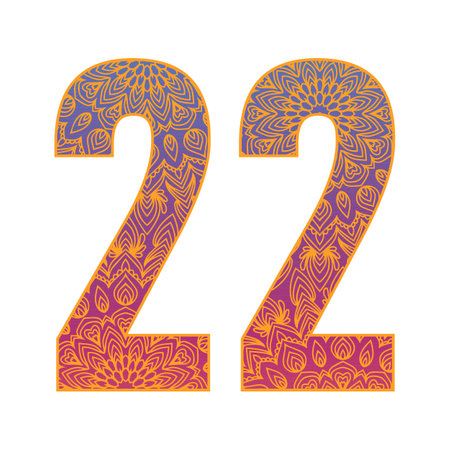What is Lucid Dreaming?
Lucid dreaming is when you’re aware that you’re dreaming while you’re still in the dream. Imagine this: you suddenly realize the wild world around you isn’t real—you’re asleep, but your mind is awake and alert. It’s a super cool experience where you can sometimes even control what happens next, like flying over a city or talking to a childhood friend. In the US, lucid dreaming has picked up steam as more people search for new ways to dig deeper into their minds, manage stress, and improve emotional wellness. Wellness communities love lucid dreaming because it offers a unique space to explore your subconscious and process feelings in a safe environment. Whether you’re looking for creative inspiration, hoping to tackle old fears, or just curious about your own inner world, lucid dreaming opens doors to self-exploration and emotional release that go way beyond what most folks expect from sleep.
2. Popular Lucid Dreaming Techniques
If you’re ready to dive into lucid dreaming for self-exploration and emotional release, there are some super accessible techniques you can start with tonight! Let’s walk through three beginner-friendly methods: reality checks, WBTB (Wake Back To Bed), and MILD (Mnemonic Induction of Lucid Dreams). These simple tools can help you become aware while dreaming and tap into your subconscious for personal growth.
Reality Checks: Build Dream Awareness
Reality checks are quick little tests you do throughout the day to ask yourself, “Am I dreaming?” Over time, this habit carries over into your dreams, making it more likely that you’ll realize when you’re dreaming. Here’s a handy table with easy reality checks:
| Technique | How To Do It | Quick Tip |
|---|---|---|
| Finger Push | Try pushing one finger through your opposite palm. In dreams, your finger might go right through! | Do this every time you enter a new room. |
| Nose Pinch | Pinch your nose and try to breathe in. If you can still breathe, you’re likely dreaming. | Practice before bed and after waking up. |
| Text/Clock Check | Look at text or a digital clock, look away, then look back. In dreams, the text or numbers often change. | Use your phone as a reminder to check regularly. |
WBTB: Wake Back To Bed Method
This method is perfect if you naturally wake up during the night or don’t mind setting an alarm. Here’s how it works:
- Set an alarm for about 5–6 hours after you fall asleep.
- Wake up and stay awake for 10–30 minutes—read about lucid dreaming or jot down your dreams.
- Go back to sleep with the intention of realizing you’re dreaming.
Beginner tip: Don’t stress if you feel groggy; just focus on your goal of becoming aware in your dream state.
MILD: Mnemonic Induction of Lucid Dreams
The MILD technique uses memory and intention to trigger lucidity in dreams. Here’s a quick breakdown:
- As you’re falling back asleep (especially after waking from a dream), repeat a phrase like “Next time I’m dreaming, I’ll realize I’m dreaming.”
- Visualize yourself becoming lucid in a recent dream.
- Keep your focus gentle but persistent until you drift off.
Beginner tip: Pair this with dream journaling so you have fresh dream memories to work with!
Your First Steps Into Lucid Dreaming
You don’t have to master every technique at once—just pick one or two that feel doable. Consistency is key! As these habits take root, lucid dreams will become more frequent, giving you plenty of opportunities for self-discovery and emotional release within your dream world.

3. Using Lucid Dreams for Self-Exploration
If you’ve ever wondered what’s really going on inside your mind, lucid dreaming can be an incredible tool for self-exploration. Think of it like having a backstage pass to your own subconscious—where you get to ask questions, explore hidden memories, and even get creative in ways that might surprise you.
How does this work in real life? When you realize you’re dreaming, try asking yourself big-picture questions or setting an intention before you fall asleep. For example, you might say, “Tonight, I want to understand why I feel anxious about work,” or “Show me something I need to know about myself.” Sometimes, your dream will give you metaphors or symbols—like being stuck in traffic when you’re feeling blocked in real life—that help you see things from a new perspective.
Lucid dreams are also the perfect playground for creativity. Ever wanted to write a song, paint a masterpiece, or solve a tricky problem? In a lucid dream, there are no limits. You can let your imagination run wild and experiment without fear of failure or judgment. Many artists and inventors have used their dreams as inspiration—and so can you!
What’s really cool is that exploring your dreams isn’t just about deep thoughts and self-discovery; it can also be fun and empowering. The more comfortable you get with navigating your dream world, the more confident you’ll feel tackling challenges in waking life. Plus, every time you dive into your subconscious during a lucid dream, you’re building a stronger connection with yourself.
So next time you become aware that you’re dreaming, take a moment to pause and ask yourself: “What do I want to explore tonight?” Whether it’s facing a fear, sparking new ideas, or simply learning what makes you tick, lucid dreaming opens up a safe space to understand yourself better—one dream at a time.
4. Emotional Release Within Lucid Dreams
Let’s dive into one of the most powerful benefits of lucid dreaming: emotional release. Think of it as your own DIY therapy session, right in your mind while you sleep! In a lucid dream, you’re not just passively watching your thoughts—you’re in the driver’s seat. This means you can access deep emotions, process lingering fears, and even work through unresolved issues, all within the safe space of your dream world.
Accessing and Processing Emotions
Ever wake up feeling lighter after a particularly vivid dream? That’s because our brains use dreams to sort through feelings. With lucid dreaming, you can consciously tap into this process. By becoming aware that you’re dreaming, you can intentionally revisit situations or memories that carry emotional weight. You might choose to confront someone from your past, express bottled-up feelings, or simply allow yourself to feel an emotion fully without judgment.
Conquering Fears
Nightmares often bring our deepest fears to the surface. In a lucid state, instead of running away or waking up scared, you can face these fears head-on. Maybe it’s public speaking, heights, or even something totally unique to you. In your dream, you can approach the source of your anxiety and interact with it—shifting from a passive victim to an empowered explorer.
| Lucid Dream Scenario | Emotional Benefit |
|---|---|
| Facing a nightmare figure | Reduces anxiety and builds confidence |
| Expressing anger safely | Releases pent-up frustration |
| Revisiting joyful memories | Boosts mood and self-esteem |
| Asking for forgiveness or closure | Heals old wounds and fosters peace |
Your DIY Emotional Wellness Toolkit—Dreamer Edition
If you’re interested in using lucid dreams for self-therapy, start by setting an intention before bed (“Tonight, I’ll face my fear of…,” or “I want to understand why I feel anxious.”). When lucidity kicks in during your dream, gently remind yourself of this goal. Don’t worry about doing it perfectly—it’s all about exploration and progress. Over time, many people notice improved emotional resilience and a deeper sense of well-being in their waking life. Lucid dreaming won’t replace professional therapy for everyone, but it can be an amazing supplement—a private emotional gym where you get stronger every night.
5. American Dreamscape: Lucid Dreaming in US Pop Culture
Lucid dreaming isn’t just a quirky sleep phenomenon—it’s made its way into the heart of American pop culture. If you’ve seen movies like Inception or episodes of shows like Rick and Morty, you’ve probably noticed how dream control and self-exploration through dreams are trending topics. These Hollywood hits have helped bring lucid dreaming out of the shadows and into the mainstream, making it something almost everyone is curious about.
Movies & TV: Turning Dreams Into Adventures
In American entertainment, dreams often become gateways to hidden truths or wild adventures. Think about how Inception turned dream manipulation into a blockbuster thrill ride, or how sitcoms use dream sequences for characters to confront their fears and desires. This fascination reflects a deeper cultural interest in using dreams not just for escape, but as tools for personal growth.
Social Media Buzz: #LucidDreaming Trends
It’s not just Hollywood—lucid dreaming has gone viral on platforms like TikTok, YouTube, and Instagram. People across the US are sharing their techniques, crazy dream stories, and tips for emotional healing through hashtags like #luciddreaming and #dreamjournal. Influencers and mental health advocates encourage followers to try lucid dreaming as part of their nightly wind-down or even their morning routines.
The Self-Care Connection
So why are so many Americans getting into lucid dreaming? It fits right in with today’s obsession with self-care and wellness. Lucid dreaming offers a unique way to explore your subconscious, work through emotions, and even manage stress—all while you’re asleep! For many, it’s an empowering addition to meditation, journaling, and other self-reflection practices. As more people look for creative ways to boost their mental health, lucid dreaming continues to rise as a fun—and surprisingly effective—tool in the American self-care toolkit.
6. Tips for Safe and Successful Lucid Dreaming
If you’re ready to jump into lucid dreaming as a tool for self-exploration and emotional release, it’s important to keep things safe, positive, and realistic for your everyday American lifestyle. Here are some practical tips to help you get the most out of your lucid dreaming practice without letting it mess with your sleep or stress you out.
Start Small and Set Clear Intentions
Don’t pressure yourself to have wild lucid dreams every night. Start by aiming for one or two lucid dreams per month. Before bed, remind yourself why you want to lucid dream—maybe it’s to better understand your feelings or work through a tough experience. Setting clear intentions helps guide your subconscious and keeps your practice focused.
Stick to a Consistent Sleep Routine
Good sleep hygiene is key! Try to go to bed and wake up at the same time each day, even on weekends. Avoid caffeine late in the day and wind down with relaxing activities—think reading, gentle yoga, or listening to music. A healthy sleep schedule not only supports lucid dreaming but also keeps your energy up for work, school, or family life.
Keep a Dream Journal—but Don’t Obsess
Jotting down dreams as soon as you wake up is super helpful for building dream recall (the first step toward lucidity). But don’t stress if you miss a morning or two—consistency is great, but perfection isn’t required. A simple notebook by your bed does the trick; no need for anything fancy unless you want it!
Know Your Boundaries
If you ever feel overwhelmed or anxious during a lucid dream, gently remind yourself that you’re safe in bed and can always wake up if needed. Practice grounding techniques like focusing on your breath or wiggling your fingers. Remember: You’re in control.
Balance Dream Work With Real Life
Lucid dreaming should enhance—not replace—your waking experiences. Make time for hobbies, friendships, and outdoor activities. Share your dreams with friends if it feels right, but don’t let dream practice take over your social life or responsibilities.
When to Take a Break
If you notice increased anxiety, trouble sleeping, or difficulty separating dreams from reality, pause your practice and talk it over with a mental health professional or trusted friend. Your wellbeing comes first!
Enjoy the Journey
Above all, have fun with lucid dreaming! Every person’s experience is different, so celebrate small wins and stay curious. With these tips in mind, you can safely explore your inner world while keeping both feet firmly planted in real life.


